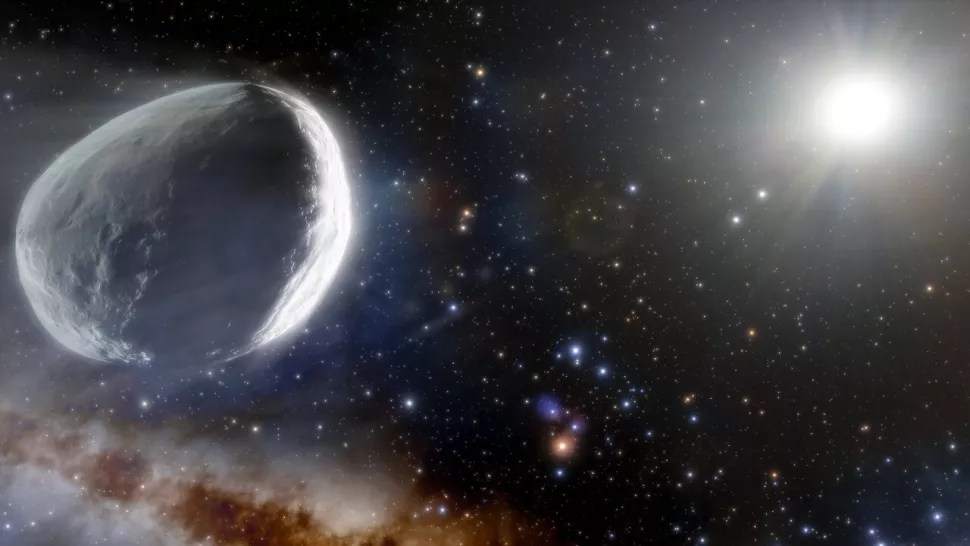A megacomet is heading toward our solar system

- Scientists have identified a new contender for the largest comet ever discovered.
- The comet is currently inbound and will be closest to the sun in 2031
- When the comet comes closest to Earth, it will be in the vicinity of Saturn’s orbit.
Comets don’t pass by every day — at least not ones that come dangerously close to Earth, or ones that are visible to the naked eye. In the past, people tended to view comets as omens of doom. The arrival of Halley’s Comet in the 11th century, for example, was associated with death, and later with the Norman Conquest of England. A Chinese emperor even once resigned after a comet appeared, deeming it a bad omen. It took centuries for us to figure out exactly what comets were and to begin to disassociate them from doom and death.
Today, we detect them long before they are visible to the naked eye and can estimate their size and velocity from halfway across the solar system. Using these modern techniques, a new study published on the preprint server arXiv has managed to find a particularly large comet heading into our cosmic neighborhood. Fifteen times the size of a typical comet, it dwarfs even the moons of Mars.
A massive comet coming our way
The Bernardinelli-Bernstein Comet, known as “C/2014 UN271 (Bernardinelli-Bernstein),” is roughly 93 miles in diameter. This estimate — which would make it more than four times the size of “The Great Comet” Hale-Bopp and seven times larger than the Martian moon Phobos — is based on the comet’s current brightness and the assumption that it is not especially bright or dim. First spotted near the orbit of Neptune, researchers have been observing the comet for a few years and their observations will become increasingly precise as it moves closer to Earth.
The comet is thought to have originated in the Oort Cloud, which is the collection of ice, rocks, and other objects floating between 2,000 to 200,000 astronomical units (AU) from the sun. (One astronomical unit is the typical distance from the Earth to the sun.) It is estimated that the comet will come closest to Earth in about ten years, reaching a point about 11 AU from the sun. The Bernardinelli-Bernstein Comet will be in the general vicinity of Saturn when it gets “close” to us.
This also means that, despite its size, it will be no brighter than Pluto or perhaps Titan at that time, and seeing it will require a telescope.
The orbit of the Bernardinelli-Bernstein Comet is more eccentric than Diogenes. Its eccentricity is .99; for reference, an orbital eccentricity of zero is a circle and a value of one is a parabola allowing an object to escape orbit. The comet also travels relatively long distances; it was last at the most distant point of its orbit from the sun, 40,000 AU, 1.5 million years ago.
One of the two astronomers the comet is named after, Dr. Pedro Bernardinelli, elaborated on the recent study in a Twitter thread.
He noted that the impetus for the study was comments from the community encouraging the research team to look closer at the curious object:
“This was a fun, quick project to work in. Special thanks to all of you comet people for pointing out we had something really interesting in our hands (and essentially telling us to do a deep dive in our data), and we hope this all makes sense!”
Although the giant comet isn’t coming to Earth, keep your eyes on the skies — you might spot something worth telling an astronomer about.





